How to Structure a Competitive Intelligence Report in 2023

Keeping up with the competition is crucial to keeping your business afloat – and if you don’t want to sink, you need to prioritize competitive intelligence.
Competitive Intelligence (CI) is the process of capturing, analyzing, and activating information related to your competitive landscape. An effective competitive intelligence report will empower your product, sales, and marketing teams to develop efficient solutions to problems and make confident strategic decisions for your business.
To create competitive intelligence reports that drive revenue and improve business performance, you need to understand your competitive landscape, the components of creating an effective report, and how to make your reports tangible and actionable.
Here’s a complete guide to take you through the entire process of how competitive intelligence works – let’s dive right into it!
Your competitive landscape: Direct competitors and beyond
Considering your entire competitive landscape when compiling competitive intelligence is essential. Your competitive landscape goes beyond companies you may be directly competing with for market share. You need to keep a watch on other types of competitors as well, like indirect competitors, potential competitors, and competitors that could be partners.
This is what the entire scope of your competition looks like:
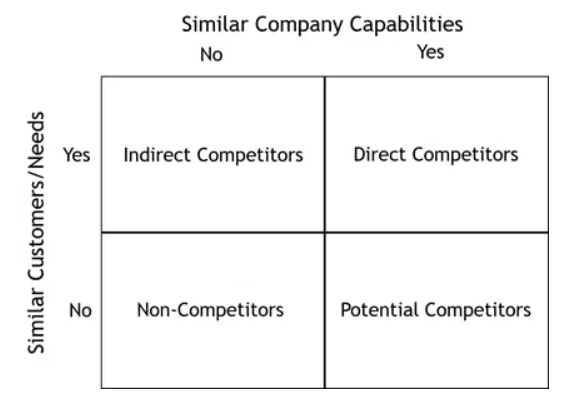
Direct competitors
A direct competitor is any brand offering similar products or services and competing for the same type of target market as your brand. A simple example would be MailChimp and Constant Contact or MailerLite.
These are the easiest to identify since they will have the same business model and product offerings as you.

Indirect competitors
Indirect competitors are brands that share an audience with you but have a different business model. Essentially, an indirect competitor’s product will target to solve the same customer problems as your product but use another service and business strategy to do the same.
For instance, Peloton bikes and Soul Cycle in-studio classes both targeted an audience that wanted to get fit by cycling.
Potential competitors
Potential competitors have similar product capabilities as your brand, but they target different customer needs from the ones your brand is targeting.
This is a critical competitor to look out for – if a company has a similar business model as you, they could expand to other verticals as they grow and eventually become your direct competitor, or you could expand and become their direct competitor.
An example is how Hubspot and Salesforce were very different when Hubspot had just entered the market, but today they are direct competitors.
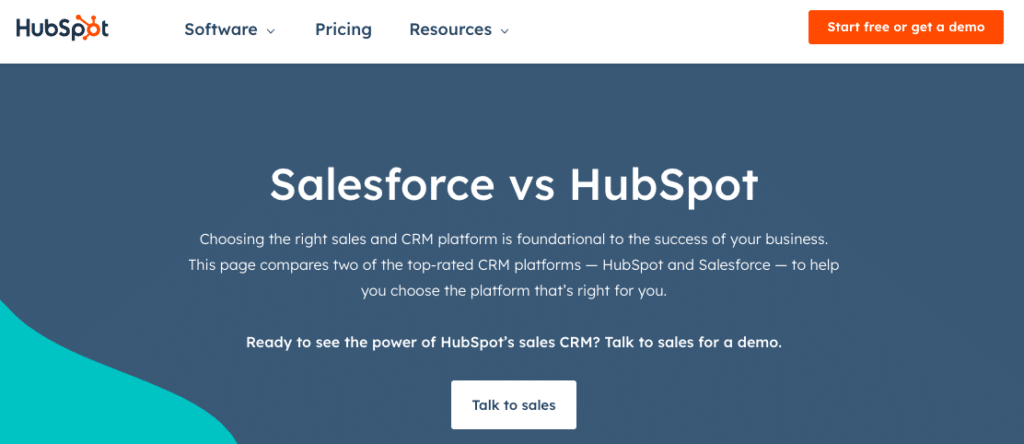
Competitors that could also be partners
There is a specific sweet spot between similar companies where you could leverage your similarities and partner up for a win-win arrangement.
Competitors that could also be partners are usually brands serving a different customer need and having a different business model than your brand.
Both brands are targeting the same audience and thus have the scope to build a powerful, mutually beneficial partnership! This is evidenced by so many SaaS products having integrations with others serving different customer needs!

Now that you’ve understood the full scope of your competitive landscape, the next step is to understand the components of the competitive intelligence process and the best practices for building competitive intelligence.
Components of the competitive intelligence process
The competitive intelligence process is ideally three-fold: research, analysis, and activation. Let’s see how you can maximize each component for conducting efficient competitive intelligence research.
- Research
Thorough research of your competitors is vital to the analysis and activation components. There are a lot of competitive intelligence sources you can extract competitive data from – internal (company data, customer surveys, sales calls, etc.) or external sources (SEO tools, ad campaigns, website updates, press releases, social media channels, and more).
Here are a few things to keep in mind when conducting research:
- Have a clear business goal:
Without this, your research will be like a shot in the dark. We’ll discuss this in-depth later in the article.
- Decide whether you want to put together an internal team or hire a third-party intelligence team:
If your brand has over 100 employees and has grown to a size where you’re losing sales to the competition, you need to have a dedicated competitive intelligence team.
The cost of hiring a third-party team can go over the budget of startups and SMBs – and in this case, in-house employees who know your brand inside-out might be the best choice to conduct competitive intelligence research.
If you’re a large company with the budget to hire a third-party agency, the scope of competitive research might also be large enough that it might be more effective to hire an outside team.
- Use competitor analysis tools to automate data collection:
Don’t spend too much time gathering competitive intel when competitive intelligence tools can do it for you efficiently.
You need to ensure any tool you choose is within your budget, will provide you with the information you’re looking for, and lets you watch multiple competitors at scale. I’d recommend Unkover, Crayon, Semrush, MozBar, and Mention.
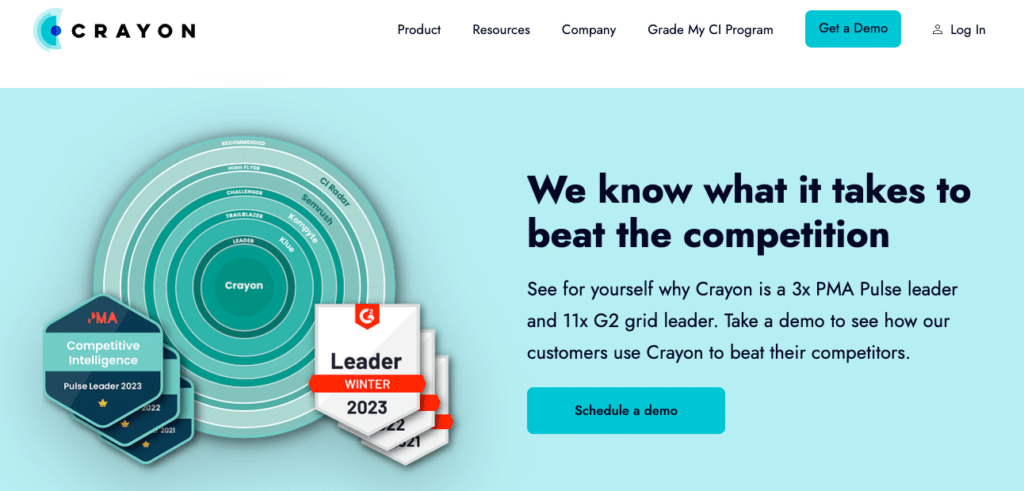
While research builds the foundation for your competitive intelligence analysis, remember that you shouldn’t spend too much time on it.
Ideally, you should automate the research process to make it less time-consuming and focus heavily on analysis and activation.
Analysis
How do you evaluate competitive intelligence? The competitor analysis stage is meant for synthesizing the intel, extracting meaning from it, and connecting the dots to find answers to your competitive intelligence questions.
Your analysis should help you:
- Measure key performance indicators that are important to your own company’s growth
- Stay updated on industry trends
- Understand the market atmosphere
- Find gaps in your product, sales, or marketing efforts that can be improved
- Compare yourself to others and benchmark the results
A simple analysis framework you can use to identify these things is SWOT analysis. The clearer your business goals are, the more efficient your analysis stage will be.
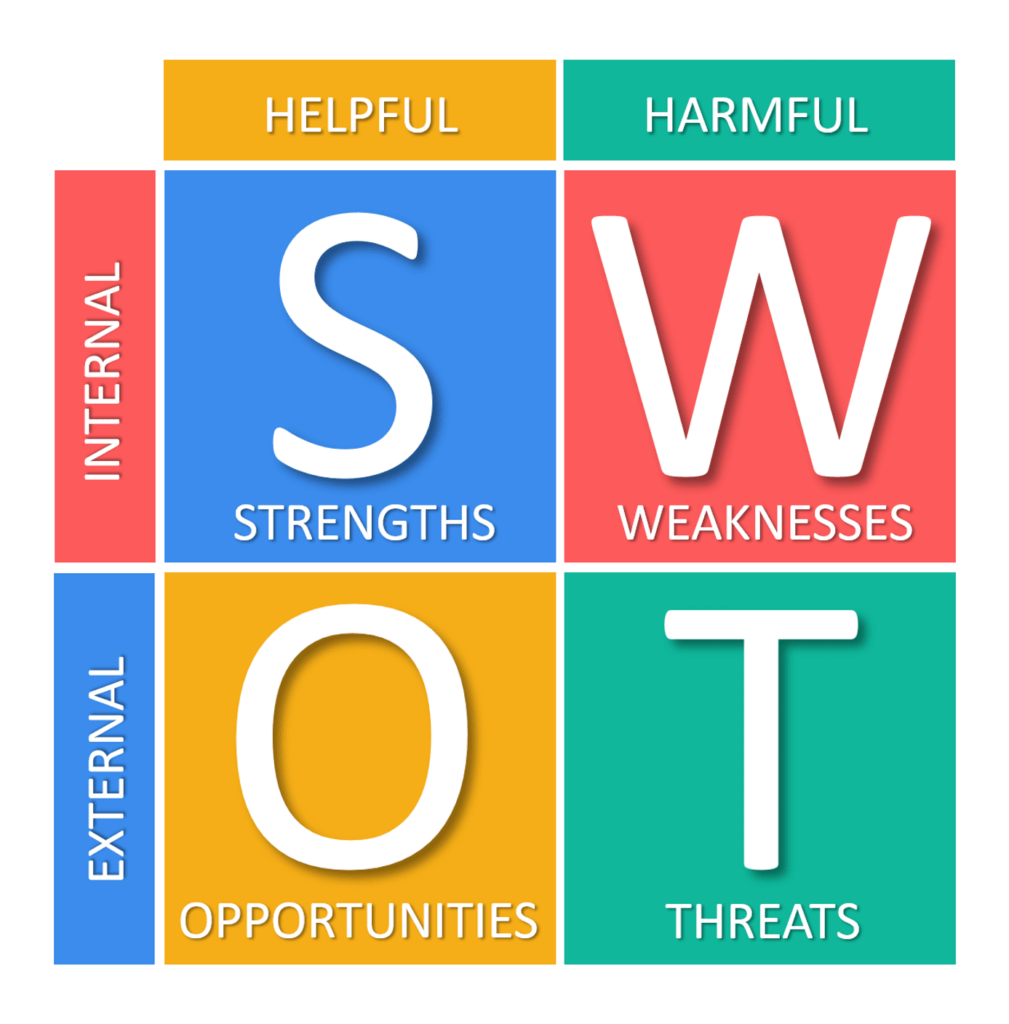
It’s essential to remember that competitor analysis is not something you can do once and forget about it – it’s a continuous process you must regularly conduct to keep up with your competitors and rapidly changing market dynamics.
To learn more, check out our in-depth guide to conducting competitor analysis.
Activation
Activation is the most critical component of the competitive intelligence process. Making findings actionable for relevant stakeholders is the only way to see positive changes in your company’s growth and revenue due to competitive intelligence analysis.
Regular competitive intelligence analysis must go out to sales, marketing, product, and executive teams.
Beyond this, having meetings to discuss the next steps based on the competitive intelligence analysis is how you can best leverage competitive intelligence to benefit your company.
Some examples of this are:
- Shifting the go-to-market strategy and offering more competitive deals
- Attempting to target new audiences
- Adjusting pricing – whether it be to increase or reduce prices
- Taking a longer time to monitor the competitor’s business strategy before making any changes to your own brand
- Improving the customer experience by shifting your core marketing touch points or sales funnel
- Improving your own product using the acquired knowledge of competitor features
Let’s look deeper into how you can build and use competitive intelligence analysis to gain a competitive edge in the market.
How to start building a competitive intelligence program
Creating a competitive intelligence program will help you decide on the frequency and level of detail of your competitive intelligence analysis.
To have an effective program, you first need to set clear goals and establish who the key stakeholders are. Let’s walk through some best practices for you to do it:
- Have a purpose tied to business goals: Competitive intelligence reports for the Executive Team
Keeping executives up to speed with competitive intelligence efforts ensures that competitive research is tied to specific business goals.
This will ensure that executive teams understand the competitive landscape and use competitive intelligence to drive decision-making and growth for your brand.
The best practice would be to generate a monthly or quarterly Executive Summary for the C-Suite within the company.
You don’t want to overload the execs with information. However, you still want them to be in the loop – so keep these reports brief and include the key highlights of the competitive intelligence effort.
Here are a few things you shouldn’t miss when gathering competitive intelligence and compiling it into a report for Execs:
- Key Hires from competitors
- Funding
- Mergers & Acquisitions
- Overall growth indicators
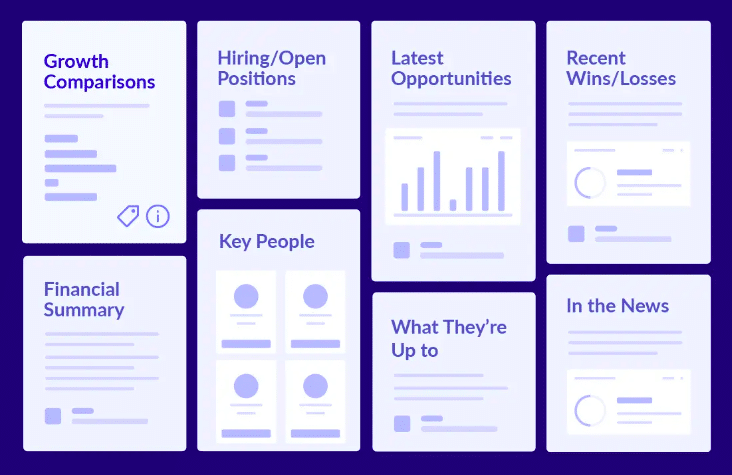
To avoid information silos, missing out on growth opportunities, and being blindsided by competitor movements or market changes, it would be ideal to provide execs with quarterly reports and share ad hoc reports to address unexpected changes to the competitive landscape.
Identify initial stakeholders
Beyond the C-Suite, competitive intelligence analysis must also go to other stakeholders for a solid competitive intelligence program.
Some key stakeholders are marketing, sales, product, customer service, and legal teams.
The best practice here would be to have a weekly or monthly in-depth report that goes to these stakeholders.
What matters most is strong involvement from marketing, sales, and product teams – these teams are the ones that will bring the most growth from implementing competitive strategies.
Ultimately, just compiling a great CI report is not enough. That’s just the beginning of how competitive intelligence strategy works.
Your report is just the starting point; the tangible and actionable output it can bring out will manifest as positive business performance for your company.
Make competitive intelligence tangible and actionable
To build momentum for your competitive intelligence program, your key stakeholders should focus on a few main outputs.
Here’s a deeper look into what your sales, product, and marketing teams need to do:
CI reports for sales teams
One of the primary purposes of sales-focused competitive intelligence is to help sales teams update their competitive battle cards.
Up-to-date battle cards on competitors will help your company’s sales reps close more deals faster.
For each competitor, it would be ideal to include the following:
- Pricing and other financial data
- Go-to-market strategy
- Product features
- Strengths
- Weaknesses or Limitations
Your sales rep should have a clear view of your brand’s place within the competitive landscape, allowing them to tailor their pitches to effectively offer a compelling value proposition to customers.
By understanding how a prospect may use your competitor’s product, competitive insights can reveal what pain points customers face with the competitor’s product. This is where your sales reps can identify and highlight areas where your product can better solve the customer’s problem.
Competitive intelligence tactics should ensure that your sales team is heading into the sales process with up-to-date information about their competitive landscape. And the best way for you to do this is by using competitive intelligence to update your battlecards!
CI reports for product teams
There are two key things to focus on when it comes to competitive intelligence data for product teams:
- Deep dives: When a competitor releases a new product or feature
- Regular us v/s them assessments
The primary purpose of competitive intelligence analysis for product teams is to find feature gaps and gain a clear view of competitors’ direction from a product vision standpoint.
Product teams need to use both tactical and strategic competitive intelligence – competitive tactical intelligence is required to build a sales or marketing strategy, and strategic competitive intelligence when roadmapping their product for future longevity.
The ideal way to do this would be to use competitive intelligence tools to track competitor positions, monitor consumers, and understand competitors’ pricing, packaging, and product margins.
Your product teams can then leverage this competitive data through competitor profiles, tracking of emerging competitors, customer profiles, and knowledge of competitor business models to create efficient product roadmaps and gain a competitive advantage in the market.
CI reports for marketing teams
Marketing is where you’ll find the most valuable competitive data – and for your marketing team, this should inform them of the various things being done by different competitors across the marketing sphere.
Some good questions for your marketing team to be asking are:
- What channels are your competitors leveraging?
- Have competitors added any new keywords to their blogs or website?
- What is your competitor’s largest source of traffic?
- What does their social media presence look like? How often are they active, and what type of content are they publishing?
Answers to these questions will give you insights into your competitor’s marketing tactics and positioning strategies.
Since marketing is an area where experimentation and adapting to changes are constant, competitive intelligence data is essential to ensure that marketing strategy is client-focused and yields effective lead generation results.
Key Takeaways
Now that you’re equipped with information on your competitive landscape and how to structure an effective competitive intelligence report, let’s go over the key takeaways you shouldn’t forget:
- Make sure you go beyond just your direct competitors and are aware of your entire competitive landscape.
- Having clear business goals is the foundation of conducting efficient, competitive research and competitive analysis.
- Use competitor analysis tools to automate competitive data collection. Use a SWOT analysis to evaluate and analyze your competitive landscape
- Analysis and activation are the most important parts of competitive intelligence reporting.
- Brief CI reports should be sent to Executives at least quarterly·
- Weekly or monthly detailed reports should go out to sales, product, and marketing teams


